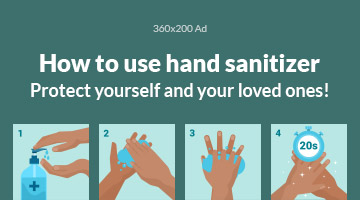The seasonal affective disorder most often affects women and young people and people who live far away from the equator and therefore have winters with much shorter days.
Approximately half of those affected can benefit from phototherapy, which exposes themselves for a few minutes each day to artificial light that mimics sunlight. The light must hit the retina through the eyes to send the proper signals to the brain to be effective.
If you think that you or someone close to you may be suffering from this syndrome, consult your doctor. Taking the right measures can prevent problems.
Fight autumnal asthenia
We can fight against the effects of autumn on our bodies by changing some of our habits:
Advance bedtime a bit and get up a little earlier, ideally when the sun starts to rise.
You are exposing yourself to natural sunlight every day, preferably in the morning, for at least half an hour.
Do some light or moderate exercise frequently.
Eat properly, avoiding added sugars.
Set aside time to spend with friends and family or for hobbies.An appropriate measure would be, for example, to go to bed early, get up a little earlier and take advantage of that time to walk to work while enjoying the first rays of the sun.
Asthenia generates a feeling of general fatigue and apathy
It usually affects more people during the early spring and fall
In autumn, asthenia influences the change of time, temperature and hours of light
Asthenia generates a feeling of fatigue and weakness that can become worse and become a chronic disease. This condition becomes more widespread and intense at the beginning of the halftime seasons, such as spring or autumn, due to changes in time, weather, temperature and atmospheric pressure.
In particular, autumnal asthenia is influenced by factors such as a return to routine, a decrease in daylight hours or a drop in temperatures, which means that our vital rhythms change and an internal imbalance is generated. This causes hormones such as melatonin to be produced in greater abundance, affecting our mood and regulating sleep, energy, hunger, and temperature.
What are the symptoms of asthenia?
The symptoms of asthenia are usually mild, and its duration does not tend to last more than a few days or weeks until the adaptation process has been overcome.
To know if we are suffering from this condition, there are several symptoms that we can identify:
Physical and mental fatigue.
Drowsiness.
Bad mood, sadness, or irritability.
Lack of appetite.
Concentration difficulty.
Decreased libido.How can we overcome it?
To overcome this feeling of general fatigue and apathy, there are several practices that we can apply.
First, to anticipate, we can gradually adapt our routine to the new schedule and establish regular eating and sleeping patterns.
Another crucial factor is eating a healthy and varied diet. It is interesting to avoid large meals in autumn, respect meal times, and drink plenty of water.
To improve our mood, it is best to take advantage of daylight hours and sunbathe, which will cause an increase in serotonin, one of the commonly called hormones of happiness.
Performing regular physical activities will also help us improve our sleep. It is recommended to do moderate exercise every day for about an hour. In addition, exercise stimulates another hormone known to make us feel better, endorphins.
To overcome tiredness, there is nothing like a good night’s rest. Therefore, it is important to respect the hours of sleep, which should be about eight a day, and get up and go to bed simultaneously every day.
Finally, to increase our motivation again, we must find an activity that stimulates us.
If we follow all these steps, we will have overcome autumnal asthenia, and at the same time, we will have acquired new habits that will help us for future seasonal changes. If, on the contrary, even following all the recommendations, we continue to feel tired of longer than expected, you must consult your symptoms with a doctor or pharmacist.
Autumn entails a reduction in solar hours and a slight drop in temperatures, which together with the incorporation into the routine and daily obligations with the consequent reduction of personal contact with friends and family, can generate autumn asthenia, a temporary syndrome that, as such, it should disappear after a few days.
The general director of Public Health and Addictions, Manuel Molina, pointed out that “to overcome the possible low mood It is advisable to expose yourself to the sun for at least ten minutes a day, preferably first thing in the morning, and to do some physical exercise regularly. “
Getting enough sleep to be rested and adapt to the hours of sunlight and follow a balanced diet in which fruits and vegetables abound, seek shared leisure with family and friends and plan trips or excursions adapted to the new season “are resources that contribute to overcoming this phase of adaptation to everyday life after the summer vacation period, “he added.
In general, the normal is an adaptation without problems, since the change of season is very gradual in Spain. However, as the body responds to environmental changes (fewer hours of sunlight and lower temperatures), biorhythms and the wake-sleep cycle are altered, which can negatively affect mood.
Symptoms associated with autumnal asthenia include tiredness, apathy, bad mood or lack of sleep. There is also a lack of interest in doing activities that we used to like, sadness, apathy, the appearance of insomnia or hypersomnia (need to sleep too much), concentration problems, irritability, a bad mood and, in some cases, eating disorders.
The main responsible for this alteration is melatonin, a hormone responsible for regulating sleep or body temperature. Its production increases with the reduction of sunlight, and this increase causes a drop in serotonin, known as the happiness hormone. Higher levels of melatonin and lower serotonin levels are the appearances of apathy, tiredness, drowsiness, or sadness.







